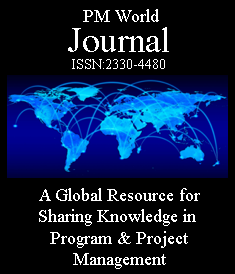Book Review
 Book Title: The Handbook on Public Private Partnerships in International Infrastructure Development
Book Title: The Handbook on Public Private Partnerships in International Infrastructure Development
Editors: Stewart Clegg, Ganesh Devkar, Yongjian Ke, Vince Mangioni and Shankar Sankaran
Publisher: Edward Elgar
List Price: £20/$26 from eBook vendors or direct from Edward Elgar Publishing.
Format: Hardcover or eBook, 534 pages.
Publication Date: 2024
ISBN: 978 1 83910 275 2
Reviewer: Brian McGlynn
Review Date: April 2025
Introduction
“What is the true success of a [Public Private Partnership] project and how can this success be measured?” Page 488[1].
That is the key question that The Handbook on Public Private Partnerships in International Infrastructure Development, published by Edward Elgar was seeking to address by examining 25 project case studies across 16 countries through 46 authors under the guidance of editors Stewart Clegg from the University of Sydney, Ganesh Devkar from CEPT University, Ahmedabad, India, and Yongjian Ke, Vince Mangioni and Shankar Shankaran from the University of Technology, Sydney.
The book aims to compare the implementation of PPPs across regions with distinct geographic, cultural, political, and economic differences. It seeks to understand these differences and provide lessons and ideas from each region to others. The editors draw on “the rich diversity of cases represented here” (Page 5) to understand the translation of the PPP idea across the world with a view to identifying the common factors for successful implementations. While doing so they recognise that “each unsuccessful project is uniquely unsuccessful in its own way” (Page 6). From these unique problems the Handbook provides myriad lessons to future practitioners.
The Heart of the Handbook
After the introductory chapter, the book is divided into four sections examining the Anglophone World, Europe, Asia, and the Middle East and North Africa. Each section provides an overview of the PPPs in the region followed by a case study of a more successful project in the various countries in the region and a less successful project for each. The concluding section draws together the information by examining what has been revealed about PPPs from the study.
It soon becomes clear that the umbrella term Public Private Partnerships (PPPs) changes over time and space to embrace a world of engagement between governments and the private sector to deliver ambitious infrastructure developments across the world. The understanding of success also varies considerably between regions and even projects, usually based on what they set out to achieve by embracing PPPs. The Anglophone World emphasises Value for Money, achieved through risk transfer to the private sector when compared to a Public Sector Comparator. The objectives of the Nordic countries, however, are built around the view that the PPP approach brings discipline and funding to the full lifecycle of the infrastructure and therefore delivers on public values more effectively than a state delivered project which is often maintained only when the cash is available.
Norway, given its sovereign wealth built on oil, sought innovation and efficiency from the private sector participation. In order to achieve it, and keep the process positive for all, the contract / process was structured to include detailed collaboration meetings before each of the construction and the operation phases, followed by monthly contract meetings and quarterly collaboration meetings. The Norwegian case study was the first to describe a Public Value assessment based on the five criteria of Accountability, Transparency, Responsiveness, Responsibility and Quality. Many of the subsequent case studies adopted this framework and it is one of the revelations of the studies for Australian PPP practitioners who focus on Value for Money, compliance with the Project Deed and little else. Another Public Value framework was described in the Netherlands case study around Quality, Responsibility and Responsiveness. It too was adopted in many case studies…
More…
To read entire Book Review, click here
How to cite this review: McGlynn, B.J. (2025). The Handbook on Public Private Partnerships in International Infrastructure Development, book review, PM World Journal, Vol. XIV, Issue IV, April. Available online at http://pmworldlibrary.net/wp-content/uploads/2025/03/pmwj151-Apr2025-McGlynn-Handbookof-Public-Private-Partnerships-book-review.pdf
About the Reviewer

Brian McGlynn
Sydney, Australia
![]()
Brian McGlynn is an Engineer, Investor and Director of major PPP SPVs. A Senior Executive with leadership roles ranging from Chief Engineer of the Commonwealth Bank of Australia to CEO, Director and Chairman with 48 years’ experience directing, investing in, and managing infrastructure companies throughout development, construction, and operations. He has executed PPP negotiations and Project Delivery for both public and private sector businesses.
Brian can be contacted at brian.mcglynn@malpine.com.au
[1] Page numbers refer to pages in the Handbook.









